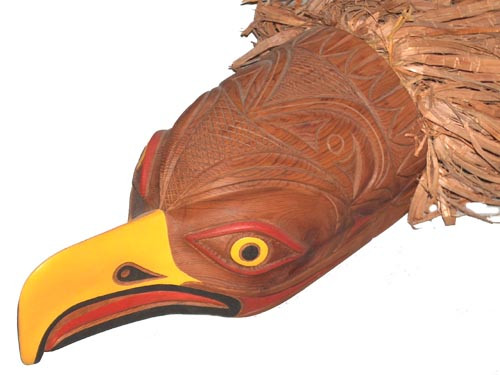BEAR
Northwest coast Indians referred to Bears as “Elder Kinsman” because of their powers and human-like qualities. Bears were often killed and taken to the Chief's house and treated as guests. The Bear is featured in many works of art, legends and superstitions.
BEAVER
The Beaver symbolizes industriousness and is known for its building skills. Beaver uses its tail to slap the water and warn of danger. Beaver is identified by its two large incisor teeth and wide cross hatched tail it is often found with a piece of wood in its mouth
BILLIKEN
The original Billiken was an adaptation of the Buddha figure patented in October of 1908 by Kansas City, Missouri art teacher, Florence Petz. The first Billikens were made of plaster and served as mascot for the Alaska-Yukon-Pacific Exposition in 1908. The Billiken made it's way north and in 1909 inspired an ivory artist named “Happy Jack ” (from Nome, Alaska) to carve the first ivory Billiken. Considered to be a good luck token, the Billiken quickly became the most popular Alaskan Eskimo souvenir of all time. Ivory Billikens reached a peak of popularity during World War II. The Billiken is still a popular souvenir of Alaska. While the typical Billiken figure has fat cheeks, a round belly, and a peaked head, each ivory artist adds a bit of his own style to the carving. Rubbing the Billikens tummy will bring good luck.
EAGLE
Is an important symbol to the Native cultures of the Northwest Coast. The Eagle is respected for its intelligence and power as well as its extraordinary vision, in both the literal and figurative senses. In myth, Eagle spirits are associated with lofty ideals and the pursuit of freedom.
FROG
Frog is revered for its adaptability, knowledge, and power to traverse worlds and inhabit the diverse realms both natural and supernatural. Frogs are primarily the spirit helpers of shamans. Frog is a great communicator, and often represents the common voice of the people.
HUMMINGBIRD
The Hummingbird symbolizes love and beauty, it is identified by its long narrow beak, large eyes and small head.
LOON
The Loon symbolizes peace and generosity. Loon is characterized by its pointed beak, which is often open and the distinctive markings and spots on its body. Loon is often shown carrying its babies on its back.
MOON
Moon controls the tides and provides light, it is a protective spirit and represents transformation. Moon is often seen in Ravens beak According to legend Raven is responsible for stealing the moon and placing it in the sky
ORCA or Killer Whale
Orca is associated with strength, prosperity and long life, it is identified by a large head, elongated nostrils, wide mouth and blowhole.
RAVEN
The Raven is an important symbol of the Haida and Tlingit tribes. The Raven is the most famous culture hero of al the Norwest Coast tribes. The Great Ancestral Raven brought sunlight to mankind.
RAVEN STEALING SUN
The sun was regarded as the spirit of life and the world. Warriors called upon the Spirit of the Sun as a source of inspriation of songs and chants. Raven stole the Sun and placed it in the heavens to bring light to all mankind.
SEA WOLF
The Sea Wolf is a being of the undersea world. It combines elements of the whale such as fins and blowhole and also the head and tail of the wolf.
WOLF
The Wolf is respected for its strength, agility, intelligence, and capacity for devotion. Northwest Cost peoples traditionally believe in the potency and magic of speech and song, and the Wolf's communicative vocal range is revered.

